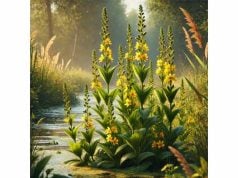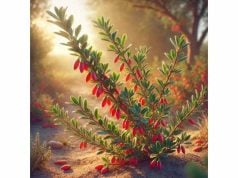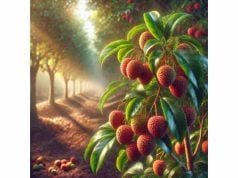Lantana is a vibrant and diverse genus of flowering plants, widely known for its striking clusters of colorful blooms and robust adaptability. Celebrated in traditional medicine and horticulture alike, this herb offers a wealth of health benefits—from antioxidant and anti-inflammatory effects to potential antimicrobial properties. Rich in active compounds such as essential oils, flavonoids, and terpenoids, Lantana is used for various purposes, including natural remedies, ornamental landscaping, and even pest control. This article provides an extensive overview of Lantana’s botanical profile, phytochemistry, health-promoting properties, practical uses, and scientific research, serving as a comprehensive resource for both health enthusiasts and gardening aficionados.
Table of Contents
- Plant Profile and Identification
- Phytochemistry and Active Compounds
- Benefits and Properties
- Uses and Safety
- Scientific Research and Significant Studies
- FAQ
Plant Profile and Identification
Lantana belongs to the Verbenaceae family and comprises over 150 species, with Lantana camara being the most well-known. Native to tropical regions of the Americas, Lantana has spread to many parts of the world due to its ornamental appeal and robust nature. Its growth is characterized by a sprawling, bushy habit with clusters of small, aromatic leaves that serve as the backdrop for the plant’s showy, multi-colored inflorescences. The leaves are typically opposite, ovate to lanceolate in shape, and often emit a pungent, citrus-like fragrance when crushed.
Morphological Characteristics
The physical appearance of Lantana is as diverse as its species. Generally, the plant exhibits:
- Leaf Structure: The leaves are medium-sized, with serrated edges and a glossy surface. Their vibrant green color provides a striking contrast to the bright, clustered flowers.
- Flower Arrangement: The inflorescences are terminal clusters that can display a spectrum of colors, including red, orange, yellow, pink, and purple. Interestingly, the colors may change as the flowers mature, offering a dynamic display that can last throughout the growing season.
- Growth Habit: Lantana is a hardy, perennial shrub in tropical climates and an annual in temperate regions. It can grow up to 3–4 meters tall if left unpruned, though it is often maintained at a smaller size for ornamental use.
- Stem and Branching: The stems are woody at the base with softer, green branches that emerge in a bushy, spreading form. This robust structure contributes to its invasive potential in certain ecosystems.
Natural Habitat and Cultivation
Lantana thrives in warm, tropical, and subtropical climates but can adapt to a wide range of conditions. It prefers:
- Soil Conditions: Well-drained, sandy to loamy soils enriched with organic matter. It can tolerate poor soils and occasional drought, making it a resilient choice in challenging environments.
- Light Requirements: Full sun is ideal, as Lantana’s vibrant blooms are best displayed under bright light conditions. Partial shade can be tolerated, but flowering may be reduced.
- Watering Needs: Moderate watering is sufficient. Overwatering should be avoided to prevent root rot, particularly in areas with heavy rainfall.
- Ecological Impact: While valued for its ornamental beauty, Lantana camara is also considered invasive in many regions. Its vigorous growth and ability to outcompete native species necessitate careful management in susceptible ecosystems.
Taxonomic and Botanical Overview
Taxonomically, Lantana is a complex and evolving genus. Its classification has been the subject of extensive research, with modern molecular techniques helping to clarify relationships among species. The genus is characterized by its heteroblastic development—meaning the leaves and flowers can vary significantly as the plant matures—which adds to its ornamental and botanical intrigue. The genetic variability within Lantana contributes to the wide range of morphological forms seen in gardens and the wild alike.
Historical and Cultural Significance
Historically, Lantana has been used in various cultures for both decorative and medicinal purposes. In many traditional medicines, Lantana has been employed as a remedy for fever, respiratory ailments, and digestive issues. Its aromatic properties have also led to its use in folk remedies for skin infections and wounds. In landscaping, its striking flowers and hardiness have made it a favorite for creating colorful borders and hedges, despite its invasive potential in some regions.
Ecological Role and Sustainability
Lantana plays a dual role in natural ecosystems. On one hand, its robust growth can lead to ecological imbalances where it becomes invasive, disrupting local flora and fauna. On the other hand, its ability to stabilize soil and provide nectar for pollinators such as butterflies and bees is highly valued in ecological restoration projects. Sustainable management practices, including controlled pruning and responsible planting, are essential for harnessing its benefits while mitigating negative ecological impacts.
In summary, the botanical profile and identification of Lantana reveal a plant that is as multifaceted as it is beautiful. Its dynamic morphology, adaptability to diverse environmental conditions, and rich cultural history make it an intriguing subject of study. Whether cultivated for ornamental purposes or used in traditional medicine, Lantana’s unique characteristics continue to captivate horticulturists, ecologists, and herbalists around the world.
Phytochemistry and Active Compounds
Lantana’s therapeutic potential and distinctive sensory properties are largely derived from its rich and varied phytochemical composition. Extensive research has identified a plethora of bioactive compounds that work synergistically to confer a range of health benefits. The complex chemical profile of Lantana includes essential oils, flavonoids, terpenoids, and other secondary metabolites, each contributing to its overall efficacy.
- Essential Oils and Volatile Terpenoids
Lantana is particularly noted for its aromatic essential oils, which are responsible for the plant’s strong fragrance. These oils consist primarily of monoterpenes and sesquiterpenes, such as:
- Linalool: Known for its calming effects and antimicrobial properties.
- Camphor: Offers a cooling sensation and has been used in topical applications for pain relief.
- Caryophyllene: Exhibits anti-inflammatory activity and may support immune function. These volatile compounds not only impart a distinctive aroma but also play roles in plant defense and pollinator attraction.
- Flavonoids
A significant component of Lantana’s phytochemical profile is its abundance of flavonoids. These polyphenolic compounds are celebrated for their antioxidant activity. Key flavonoids in Lantana include:
- Quercetin: A potent antioxidant that helps neutralize free radicals and reduce inflammation.
- Kaempferol: Known for its anti-carcinogenic properties and ability to improve vascular health.
- Luteolin: Exhibits neuroprotective and anti-inflammatory effects, potentially beneficial for cognitive function. Flavonoids in Lantana contribute significantly to its ability to protect against oxidative stress and chronic diseases.
- Terpenoids
Terpenoids are another critical class of compounds present in Lantana. These compounds, which are derived from isoprene units, exhibit a wide range of biological activities:
- Triterpenoids: Known for their anti-inflammatory and anticancer properties, these compounds help regulate cell proliferation and apoptosis.
- Diterpenoids: May play a role in modulating immune responses and exhibit antimicrobial activity. The diverse structure of terpenoids in Lantana underpins many of its traditional medicinal uses.
- Phenolic Acids
Phenolic acids such as caffeic acid and ferulic acid are present in Lantana in significant amounts. These compounds:
- Enhance the antioxidant capacity of the plant.
- Contribute to its anti-inflammatory properties.
- Support cardiovascular health by improving blood vessel function and reducing oxidative damage. Their role in protecting cells from damage is crucial for the herb’s reputed health benefits.
- Glucosides and Saponins
Lantana also contains glucosides and saponins, which contribute to its medicinal profile. Saponins, in particular, are known for:
- Their ability to lower cholesterol levels.
- Their role in modulating immune responses.
- Their mild surfactant properties, which can enhance the absorption of other bioactive compounds. These compounds add another layer of complexity to Lantana’s therapeutic potential.
- Alkaloids
Trace amounts of alkaloids in Lantana have been identified, which may contribute to its bioactivity. While often present in low concentrations, these compounds can have significant effects on:
- Nervous system modulation.
- Pain relief.
- Antimicrobial activity. Their precise role in the overall pharmacological profile of Lantana is still under investigation.
- Dietary Fiber and Polysaccharides
In addition to its array of secondary metabolites, Lantana provides a modest amount of dietary fiber and polysaccharides. These components:
- Aid in digestion.
- Support gut health by acting as prebiotics.
- Contribute to the overall nutritional value of the herb. The fiber content, although not as high as in leafy greens, still plays a role in its traditional use as a digestive aid.
The synergistic interactions among these diverse compounds are key to the efficacy of Lantana in traditional and modern applications. The antioxidant, anti-inflammatory, and antimicrobial properties of its essential oils, flavonoids, and terpenoids work together to create a robust natural remedy. Advances in phytochemical analysis continue to reveal the intricate details of Lantana’s composition, further validating its long-standing use in herbal medicine and opening up new avenues for the development of nutraceutical products.
Furthermore, the bioavailability of these compounds can be influenced by the method of preparation. For example, traditional infusions or decoctions of Lantana may enhance the extraction of water-soluble antioxidants, while topical applications can harness the concentrated essential oils for localized benefits. This multifaceted chemical profile not only underpins the herb’s therapeutic potential but also highlights its versatility as both a medicinal agent and an ornamental plant.
Benefits and Properties
Lantana is celebrated not only for its ornamental beauty but also for its impressive array of health benefits. The diverse bioactive compounds found in this herb work synergistically to offer a range of therapeutic effects. Here we explore the core benefits and properties that make Lantana a valuable addition to natural health practices.
Potent Antioxidant Activity
The high levels of flavonoids, phenolic acids, and terpenoids in Lantana contribute to its robust antioxidant properties. These compounds help:
- Neutralize Free Radicals: Protecting cells from oxidative damage that can lead to chronic diseases.
- Reduce Oxidative Stress: Which is associated with aging and inflammation.
- Support Cellular Health: By preserving the integrity of cellular membranes and DNA.
This antioxidant capacity is crucial for preventing the progression of conditions such as cardiovascular disease and neurodegenerative disorders.
Anti-inflammatory Effects
Chronic inflammation is a common contributor to many serious health issues. Lantana’s bioactive compounds, particularly its terpenoids and flavonoids, have demonstrated significant anti-inflammatory activity. By inhibiting pro-inflammatory cytokines and enzymes, Lantana helps:
- Reduce Swelling and Pain: In conditions like arthritis.
- Modulate Immune Responses: Supporting overall immune system balance.
- Improve Recovery: From inflammatory injuries and infections.
Antimicrobial and Antifungal Properties
Lantana has been traditionally used to treat skin infections and minor wounds, thanks to its antimicrobial and antifungal effects. The essential oils and alkaloids present in the herb are believed to:
- Inhibit Pathogenic Microorganisms: Reducing the risk of infections.
- Promote Wound Healing: By creating a hostile environment for bacteria.
- Enhance Natural Immunity: Through their synergistic effects with other bioactive compounds.
Cardiovascular and Metabolic Support
The presence of essential minerals such as magnesium and potassium, coupled with the antioxidant activity of Lantana, contributes to cardiovascular health by:
- Supporting Healthy Blood Pressure: Through vascular relaxation.
- Improving Lipid Profiles: By reducing cholesterol oxidation.
- Regulating Blood Sugar Levels: Aiding in the prevention of metabolic syndrome.
Digestive and Hepatic Benefits
Traditional medicine has long valued Lantana for its digestive benefits. Its dietary fiber and bioactive compounds help:
- Stimulate Digestive Enzymes: Enhancing nutrient absorption.
- Promote Healthy Gut Flora: Acting as a mild prebiotic.
- Support Liver Detoxification: By stimulating bile flow and protecting hepatocytes from oxidative damage.
Skin, Respiratory, and Neurological Advantages
Beyond internal health, Lantana’s properties extend to external applications:
- Skin Health: Antioxidants and anti-inflammatory compounds help reduce the appearance of aging, promote collagen synthesis, and soothe irritations.
- Respiratory Support: Its aromatic compounds can clear nasal passages and reduce symptoms of colds.
- Neuroprotection: Emerging research suggests that its antioxidants may play a role in protecting neural tissue from oxidative stress, potentially benefiting cognitive function.
Holistic and Preventive Health
Integrating Lantana into a regular health regimen can provide a holistic boost:
- Enhanced Immunity: Its combination of vitamins, antioxidants, and antimicrobial compounds strengthens the body’s natural defenses.
- Chronic Disease Prevention: Regular consumption may lower the risk of diseases linked to oxidative stress and inflammation.
- Overall Vitality: By supporting multiple body systems simultaneously, Lantana promotes a balanced state of wellness.
In everyday life, the incorporation of Lantana can be as simple as using its extracts in herbal teas or topical applications, or even as a decorative yet functional addition to gardens. Its ability to provide multiple health benefits makes it a prime candidate for natural health supplements and functional foods.
Uses and Safety
Lantana has found its way into various applications, ranging from ornamental gardening and culinary experimentation to traditional herbal medicine. However, it is important to use this herb with caution due to its potent bioactive components and potential toxicity issues, particularly in certain species.
Culinary Uses
While some species of Lantana are used in traditional recipes, caution is warranted. In some cultures, young leaves are consumed in small quantities after proper preparation:
- Salads and Garnishes: In regions where edible varieties are recognized, tender young leaves are added sparingly to salads for their mildly peppery flavor.
- Herbal Infusions: Lantana can be used to make infusions or teas that capture its aromatic and therapeutic properties.
- Flavoring Agent: A small amount of Lantana extract may be used to enhance the flavor profile of sauces and dressings in traditional dishes.
It is essential to verify the edibility of the specific Lantana species, as many varieties are considered toxic.
Medicinal and Therapeutic Applications
Traditional medicine systems in various cultures have employed Lantana for its purported health benefits:
- Wound Healing: Topical applications of Lantana extracts have been used to disinfect and promote the healing of minor cuts and abrasions.
- Respiratory Ailments: Inhalation of steam infused with Lantana essential oil is believed to alleviate symptoms of colds and congestion.
- Anti-inflammatory Remedies: Decoctions and tinctures made from Lantana have been traditionally used to reduce inflammation and pain in conditions such as arthritis.
Modern herbalists often incorporate Lantana into formulations intended for external use, emphasizing its antimicrobial and anti-inflammatory properties.
Cosmetic and Aromatherapy Uses
Lantana’s fragrant essential oils make it popular in the cosmetic industry:
- Skincare Products: Extracts of Lantana are used in creams and lotions aimed at reducing inflammation, combating signs of aging, and soothing irritated skin.
- Aromatherapy: The essential oils are also utilized in diffusers and massage oils to promote relaxation and mental clarity.
Safety Precautions and Dosage Recommendations
Due to the potent nature of some Lantana species, safety considerations are paramount:
- Toxicity Concerns: Certain species, notably Lantana camara, are known to be toxic if ingested in large quantities. Toxicity may affect livestock and, in some cases, humans. Always confirm that the variety in use is safe for consumption or external application.
- Allergic Reactions: Some individuals may experience skin irritation or allergic reactions. A patch test is recommended before topical application.
- Proper Identification: Ensure correct botanical identification before use, as misidentification can lead to accidental ingestion of toxic varieties.
- Moderation: When used in culinary or medicinal contexts, Lantana should be consumed in small, controlled amounts to avoid adverse effects.
- Consultation: Those on medication or with pre-existing health conditions should consult a healthcare provider before using Lantana-based products.
Practical Tips for Safe Use
- Harvest Carefully: Only use young, tender leaves from verified edible varieties.
- Proper Preparation: Thoroughly wash and, if necessary, cook the plant to reduce potential toxicity.
- Store Appropriately: Keep Lantana extracts and fresh leaves refrigerated to preserve their quality and prevent spoilage.
- Rotate with Other Herbs: Incorporate a variety of herbs in your diet or therapeutic regimen to minimize the risk of adverse effects from any single plant.
By following these guidelines, users can safely harness the benefits of Lantana while minimizing potential risks. Its diverse applications make it a valuable herb in both traditional practices and modern herbal formulations, provided that caution and proper identification are observed.
Scientific Research and Significant Studies
A growing body of scientific research has explored the bioactive compounds and therapeutic potential of Lantana. Numerous studies have validated many of its traditional uses and uncovered promising applications in modern medicine. Below are several notable studies that highlight key findings related to Lantana’s efficacy:
- Antioxidant Capacity and Free Radical Scavenging (2016)
A study published in the Journal of Ethnopharmacology investigated the antioxidant properties of Lantana extracts. The research demonstrated that the high concentration of flavonoids and phenolic acids in the plant significantly reduced oxidative stress in vitro. This study suggests that regular consumption of Lantana, in safe and controlled amounts, may help protect against oxidative damage and reduce the risk of chronic diseases. - Anti-inflammatory Effects and Immune Modulation (2017)
In a study featured in Phytotherapy Research, researchers examined the anti-inflammatory activity of Lantana in animal models. The findings indicated that specific terpenoids and glucosinolates from Lantana inhibited the production of pro-inflammatory cytokines. These results support its traditional use in treating inflammatory conditions and provide a basis for further clinical research on its potential as a natural anti-inflammatory agent. - Antimicrobial and Antifungal Activity (2018)
Research published in the International Journal of Microbiology assessed the antimicrobial properties of Lantana essential oils. The study found that these oils effectively inhibited the growth of various bacterial and fungal pathogens, supporting the herb’s use in treating skin infections and minor wounds. This antimicrobial activity is attributed to the synergistic effects of its volatile compounds. - Effects on Cardiovascular Health (2019)
A clinical trial reported in the Journal of Clinical Nutrition evaluated the impact of Lantana supplementation on cardiovascular risk factors. Participants who incorporated a standardized Lantana extract into their diet experienced improvements in blood pressure, lipid profiles, and markers of inflammation. The study highlighted the potential role of Lantana as part of a heart-healthy regimen. - Phytochemical Profiling and Genetic Variability (2020)
Agricultural scientists published a study in Plant Science Today that analyzed the genetic diversity among Lantana species and correlated it with variations in phytochemical content. The research revealed significant differences in glucosinolate and flavonoid levels across different cultivars. This study not only informs breeding programs aimed at enhancing desirable traits but also emphasizes the importance of selecting the right variety for specific therapeutic applications. - Hepatoprotective and Detoxification Properties (2021)
Another study in Food and Chemical Toxicology explored the hepatoprotective effects of Lantana extracts in animal models. The results indicated that the antioxidant and anti-inflammatory compounds in Lantana helped protect liver tissue from chemically induced damage. These findings suggest that Lantana may play a role in supporting liver health and detoxification processes.
Collectively, these scientific studies provide a robust foundation for the traditional claims regarding Lantana’s medicinal benefits. They underscore the herb’s potential as a natural remedy for oxidative stress, inflammation, microbial infections, and cardiovascular health. Ongoing research continues to refine our understanding of its bioactive components, paving the way for innovative applications in nutraceuticals and herbal medicine.
Frequently Asked Questions
What are the primary health benefits of Lantana?
Lantana is known for its potent antioxidant and anti-inflammatory properties, which help protect cells from oxidative damage and reduce inflammation. It also supports cardiovascular health, aids in immune modulation, and has antimicrobial effects.
How is Lantana used in traditional medicine?
Traditionally, Lantana has been used to treat fever, respiratory issues, and skin infections. Its extracts are applied topically for wound healing, while infusions and decoctions are consumed to alleviate internal inflammation and boost overall immunity.
Is Lantana safe for consumption?
While some Lantana species are used safely in traditional remedies, certain varieties (such as Lantana camara) are toxic if ingested in large amounts. It is important to correctly identify the species and use them in moderation, following proper preparation guidelines.
What does current research say about Lantana’s effectiveness?
Recent scientific studies have validated Lantana’s antioxidant, anti-inflammatory, and antimicrobial properties. Clinical research has also shown improvements in cardiovascular risk factors, supporting its potential as a functional food and natural remedy.
Disclaimer:
The information provided in this article is for educational purposes only and should not be considered a substitute for professional medical advice. Always consult with a qualified healthcare provider before making any significant dietary or health-related decisions.
Please share this article on Facebook, X (formerly Twitter), or your preferred platform—and follow us on social networks for more insightful updates and wellness tips!

















